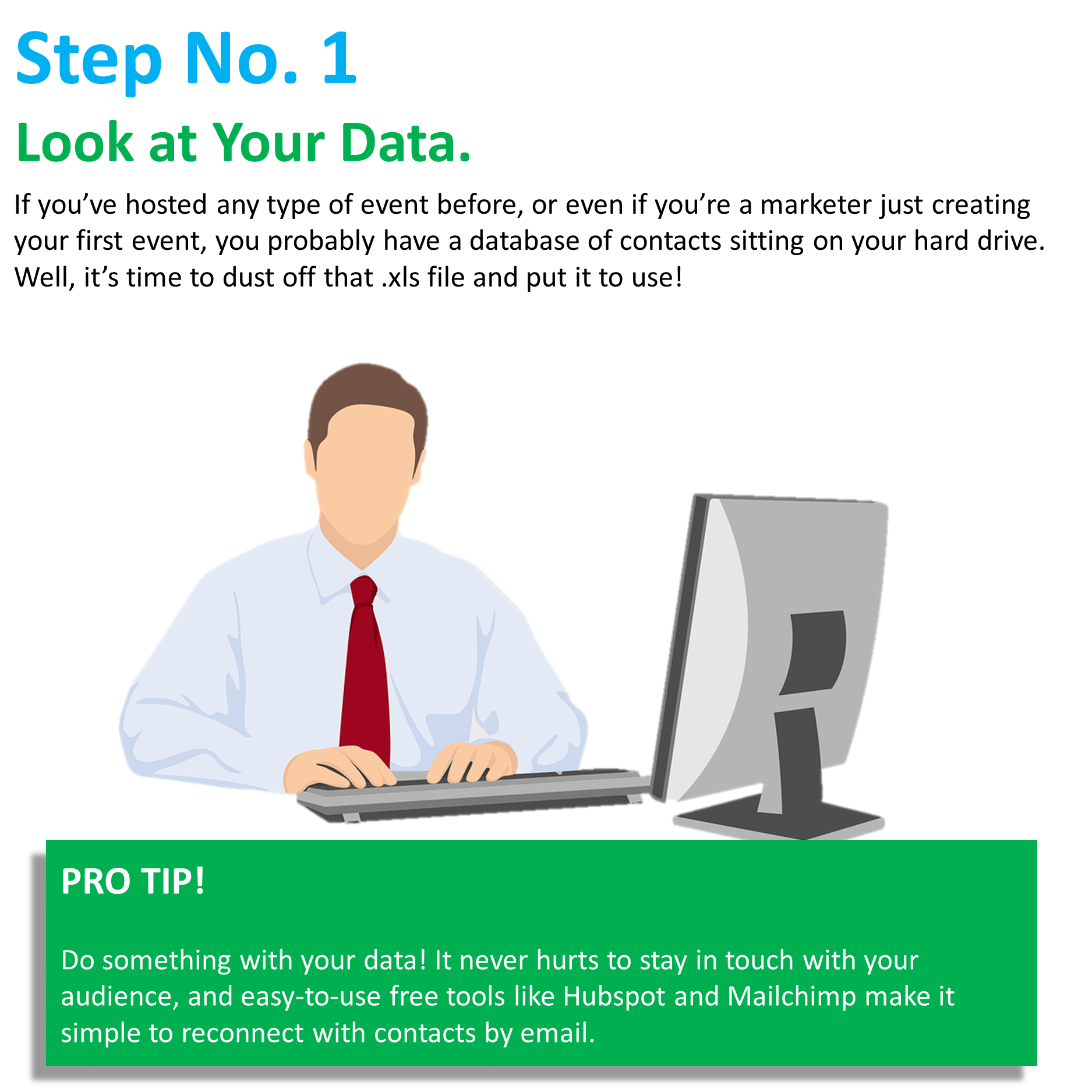The pandemic continues to wreak havoc on the normal way of life around the world, and for marketers hosting in-person events, the changes have never been more real. Many event organizers have been forced to cancel their meetings and presentations, and several of those are transitioning to virtual, digitalized versions of the events instead.
That’s a great strategy, especially if you’re a business looking to maintain relationships with your audiences while we all await the return of the new normal. But with that in mind, a virtual event is a vastly different experience for attendees compared to an in-person one, and it’s important as event marketers that we take those differences into account as we build out our virtual digital events.
I recently had a conversation about virtual events with master marketing and event strategist Lisa Baer, and we both agreed a lot of businesses out there are “just doing it” rather than making sure they’ve put the right legwork in ahead of time. Bottom line, a lot of marketers are not taking full advantage of the opportunities of virtual events.
That’s why Lisa and I teamed up together to develop this important six-step checklist to help you transition your in-person event into a successful virtual one.
1. Look at Your Data
If you’ve hosted any type of event before, or even if you’re a marketer just creating your first event, you probably have a database of contacts sitting on your hard drive. Well, it’s time to dust off that .xls file and put it to use!
Before you begin to map out your virtual event, begin by looking at your contacts database and seeing what commonalities you can find.
Are these close contacts, or are many of them long-lost?
Do they mostly work in one industry or a few?
Do you think they’re still working right now, or have times changed their outlook on things
You’re probably going to be populating your event with a number of the folks in your email lists, so begin the virtualization process by taking account of who you’re going to be hosting the meeting for. This way, you can build out an event that’s meaningful to what your audience’s lifestyle might be like in this weird world we’re in.
2. Ask Your Audience Some Questions
Since we have our database in hand anyway, why not take advantage and reach out to our attendees ahead of time to do some fact-finding?
It seems like webinars and virtual events are popping up everywhere lately, but if you’ve had a chance to participate in any of those since the world stopped spinning a few weeks ago, you know that not all virtual events are created equally. Some are too long, some don’t have the right technology, and some topics just don’t transition 1:1 to a virtual setting.
To avoid some of these common virtual event pitfalls, reach out to your audience before you put together your event and conduct a short survey.
Start by building out a few questions to get a good idea who will attend the event and what they’re interested in seeing.
How long would they like to stay in the session?
Do they prefer live or on-demand video? Do they even want video?
What have they liked and disliked about other virtual events they’ve been to lately?
Remember, your virtual event is not going to be the exact same as your in-person event. Knowing how your audience wants to consume the information you have to share with them is going to be crucial when developing your successful virtual event, and surveys are a great way to tap directly into the minds of your audience!
3. Brainstorm on Your Data
Like everything in the market research world, data is only as powerful as it useful. That’s why we’re making a special point of using our survey data in our event process.
Let’s say you had an in-person event ready to go, filled with great presenters each conducting hour-and-a-half long sessions. But then through your survey you learn that your audience is more interested in short, snackable content vs. full-blown feature-film-length presentations. What can you do?
It’s time to brainstorm! Take your event, and what you know about your audience’s preferences, and start to envision how the same content could be reimagined for the format your audience is looking for. Can your presenter pre-record multiple 15-minute presentations instead? If not, can you work with an editor to convert their full presentation into shorter chunks yourself?
Another hypothetical, what if you learn that your audience really can’t stand ‘just watching’ video content on their computers? Could you incorporate interactive tools like Slido or Kahoot to create something more engaging or game-like?
The ‘hows’ are going to change in every situation based on the feedback you receive, which is why this step is focused on brainstorming rather than direct steps to take in your event.
Hone in on the insights you’re able to pull from your data, and allow them to guide your planning process. Wondering ‘what is an insight?’ Be sure to read this article!
Sit down with your team (virtually, because social distance), review what you have planned and what your audience is saying, and piece together some solutions to make your virtual event amazing. You’ll be amazed by the ideas that come together!
4. Identify the Experiences and Formats
After your brainstorm, it’s time to identify the experiences and formats of your event. There may be new opportunities for speakers to create more group break-outs, utilize instant polls for feedback or have a more moderated discussion on a platform like Zoom that is very engaging.
The event may be scheduled to go live on one platform, but consider a multi-stream approach that includes streaming select content on Facebook or Instagram Live to reach new audiences. Live-stream events on Facebook can have an ROI of 42% for lead generation. This will require creating a live stream schedule that aligns with your social media content and a plan to capture the leads. Much of the social media content can be created and scheduled ahead of time but keep in mind that during the event the comments will need to be moderated in real time.
You can even look into other types of interactive learning tools to support your sessions.
5. Create Valuable Networking Experiences
One key to creating a successful virtual event will be to include networking opportunities with breakout spaces for attendees to meet other people. Craft breakouts with questions, discussion guides or a subject matter expert to lead the discussion.
Add several networking breakouts to the event. It’s best to prompt the group with a question or suggest way to provide an introduction for the first session. Choose a smaller group of 4-6 first to allow participants to get to know one another but groups of 25 can tackle topics too. Plan to provide a way for participants to connect after the event or ask participants to share their contact information in the In-meeting chats.
6. Get the Sponsors More Involved with Expanded Options
Things have changed. Your sponsors may have expected to have signage up the escalators, but now they may have a new opportunity to sponsor a virtual session, email campaign. They can even pre-mail wearables or cups that attendees can share on camera! Talk to your sponsors and let them know that virtual has several advantages as well.
The length of time that a sponsor can be exposed to your audience in a virtual event has been expanded too. Sponsors can have banners and pop-ups on livestreams, branded breakout rooms and even sponsor Q & A sessions. That viewership can be expanded by using the recorded content repurposed as a webinar, a white paper or blog as well! These can be powerful lead generation tools that directly target their customers and may provide more qualified leads than the on-premise plans.
Make it happen!
This pandemic is definitely changing the world, and it’s up to creative marketers to keep the gears spinning for businesses everywhere. The meetings and events world has always been a cornerstone for marketing, networking, and business in general, and as the world figures out how to start turning once again, the tips above can help you keep your new virtual event on track!
Receive my articles in your inbox! Use the form below!
Book Recommendation!
Something crazy to think about, everything we discussed in this article is about how behaviors and expectations are changing. It reminded me of this awesome book by Jonah Berger, one of my favorite authors. Just wanted to make sure I recommended it to you!








